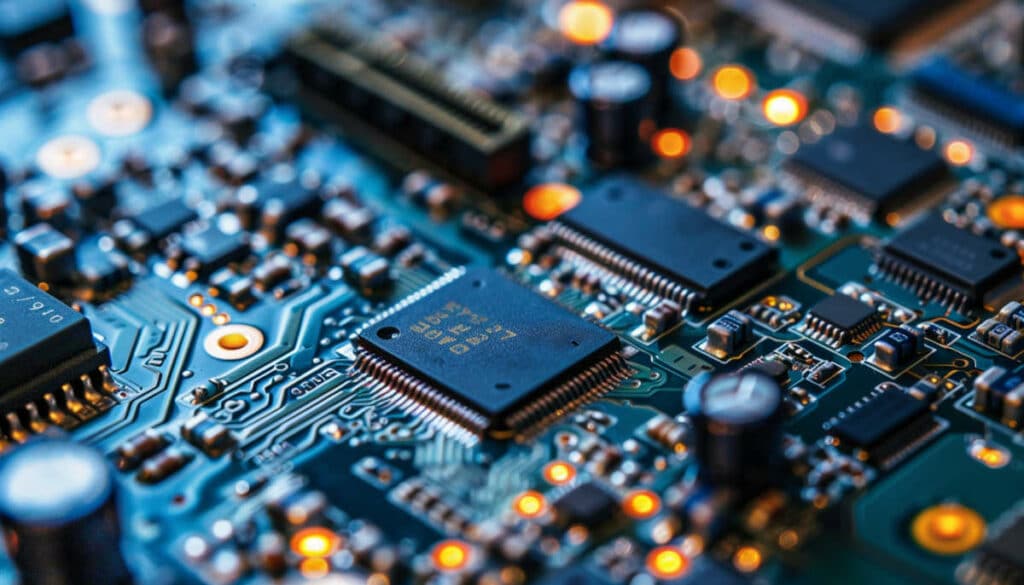Embedded systems, present in a multitude of devices such as mobile phones and industrial machinery, are highly optimized for distinct tasks, achieving great efficiency. These systems, which integrate both hardware and software, are pivotal in our everyday lives. This document delves into their structure, the obstacles they encounter, and the technological advancements influencing their development.
What are embedded systems?
Embedded systems are computing systems, often unnoticed, that are fundamental to the functionality of numerous devices we interact with daily. From mobile phones, microwave ovens, vehicles, to industrial control systems, these autonomous units are fine-tuned to execute specific tasks with remarkable efficiency. Considerations such as computational ability, memory capacity, software utilized, timing requirements, and energy usage are vital in the design and enhancement of these systems.
Contrary to desktops, servers, and other comparable computing hardware, embedded systems are integrated into end products and encompass hardware and software tailored to their tasks.
How are they used?
The applications for embedded systems are virtually limitless. Spanning from domestic devices to extensive data centers, and in sectors like aviation or defense, they are crucial for the products they are designed for. This is what renders their design and development profoundly challenging.
The architecture of an embedded system
The architecture of an embedded system is conceived to maximize efficiency, dependability, and energy conservation for targeted tasks. It can be illustrated by the following diagram, yet may vary depending on the system:

1. The processor (CPU)
At the core of any embedded system lies its processor, the selection of which is dictated by the intended applications:
- A microcontroller, amalgamating a processor, memory, and peripherals on a solitary chip, ideal for cost-effective and energy-efficient solutions.
- A microprocessor, offering enhanced computational capabilities, often employed in intricate processing tasks.
- ASIC (Application-Specific Integrated Circuit), tailored for a specific application, delivering optimum performance.
2. Memory
This is segregated into various types, each serving a distinct purpose:
- RAM memory, for momentarily storing data.
- ROM memory, housing firmware or essential software.
- Flash memory, for long-term data storage without volatility.
3. Input/output (I/O) devices
These are critical for the embedded system’s interaction with the external environment. They may include:
- Sensors, tasked with gathering data from the surroundings (temperature, pressure, motion, etc.).
- Actuators, tasked with affecting the physical world (motors, relays, hydraulic cylinders, etc.).
- Communication interfaces utilizing protocols like UART, SPI, I2C, or CAN for interactions with other devices or networks.
4. Software and operating system

The software in an embedded system is typically specialized, comprising the firmware, which is the foundational software controlling the hardware, and occasionally a real-time operating system (RTOS), engineered to oversee tasks in real-time, ensuring compliance with deadlines.
5. Power management
Energy efficiency is a paramount consideration for embedded systems, particularly for those that are portable or battery-operated. Features may include:
- Low energy modes: Diminishing power usage when the system is not active.
- Voltage regulation: Fine-tuning the electrical power supply across various components of the system.
6. Communication buses
Communication buses facilitate the linkage among different components within the embedded system, enabling data and command transfers between the processor, memory, and peripherals:
- Internal bus (e.g., data bus, address bus) connecting the internal elements of the microcontroller.
- External bus (e.g., PCI, USB), permitting connectivity with external gadgets.
The constraints of embedded systems
Even though embedded systems are potent and adaptable, they must function in often demanding environments and adhere to rigorous standards:

Temporal Constraints
They frequently need to meet tight schedules, particularly in scenarios requiring real-time operations.

Energy Consumption
This aspect is critical for battery-operated or portable embedded systems, such as mobile gadgets and IoT devices.

Size and weight
They often need to be compact and lightweight, particularly for mobile and portable applications.

Reliability and Robustness
Embedded systems are expected to function reliably and uninterruptedly in harsh conditions.

Cost Constraints
Cost considerations are imperative in the design and manufacture of embedded systems, particularly for consumer products on a large scale.

Security
Securing sensitive information against unauthorized access and cyber threats is crucial, especially in a world that is increasingly interconnected.
Conclusion: Current challenges and trends
Embedded systems are currently confronted with growing challenges such as enhancing computational capabilities while minimizing energy consumption and bolstering security.
With the incorporation of artificial intelligence for more autonomous decision-making, the advancement toward smaller, more efficient systems, and the embrace of the Internet of Things (IoT), these systems are seeing expanded connectivity and improved functionalities.
They remain indispensable in our daily lives, offering innovative and efficient solutions. Despite the prevailing hurdles, ongoing technological progress promises to render these systems even more capable, secure, and energy-efficient.










